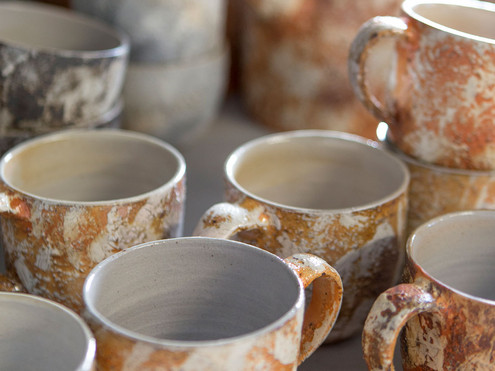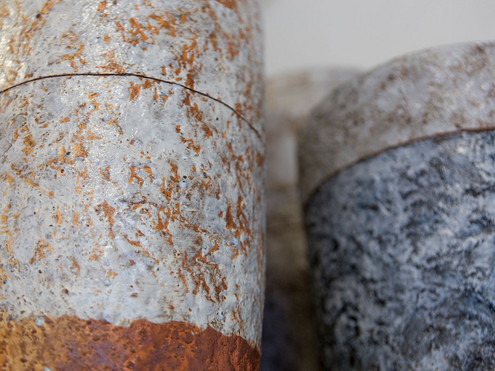Apart from the previously described standard processes, other firing methods are used to achieve special characteristics in the pottery product. Raku firing and salt glaze firing are examples of these techniques.
Raku firing.
The firing technique has its origin in Japan and over time has become established in Europe.
Ceramic bodies with a high proportion of non-plastic components like chamotte or sand are used in the Raku firing. They enable the formed pottery ware to withstand better the wide differences in temperature occurring during the firing process. After a biscuit firing at about
900 °C the objects are provided with glazes and colours especially suitable for this process. The glost firing is effected at 950 °C to 1100 °C. Depending on the required glaze surface and colour of the final product, the firing can be done by oxidizing or reducing. Gas, electric- or wood-burning kilns are used. In contrast to conventional processes, the ceramic is taken out of the kiln while hot by means of pliers. Then it is put in a fireproof vessel filled with flammable materials like sawdust, hay or straw and then covered with this material. The firing is mostly outdoor because it produces much smoke. Through this embedding the self-ignited material causes a reduction through which the glaze and the fired body acquire their special visual effects. The created workpiece is heavily sooted after being taken out and is washed in water while being still warm and rubbed with steel wool as needed.
Only then does the finished glaze surface appear: Due to the big differences in temperature a craquelure (crackle network) emerges on the glazed pottery product which is typical of Raku firing. A black staining of the ceramic surface shows on the unglazed spots. Each piece produced through Raku firing is one of a kind.





